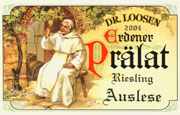Polarizing fare – you either love it or hate it. The phrase “blue cheese” elicits strong responses from most. I suspect the ribbon of blue, representing nasty mold in naysayers’ minds, may play a greater role than any objectionable taste. The grossout factor cannot be underestimated in analyzing individuals’ culinary rejections. It is just those blue veins, however, coupled with a racy mouthfeel and piquant flavor, that attracts those perpetually looking for more “edge” on their plates and on their palates.
Blue cheese seems to have been discovered rather than devised. Historians believe that molds naturally developed when cheeses were stored in caves, and someone decided to taste some, although most believed the cheese to be ruined. Finding delight in the taste, texture and blue-green color, cheesemakers then deliberately developed the cheese in caves where the mold was present. Today, mold is either injected into the cheese, or mixed in with the curds, and is derived from mold spores from Penicillium cultures. Many blue cheeses are still aged in caves, but the main requirement is that the environment be temperature-controlled, not unlike that required for wine.
Speaking of wine, what should enthusiasts drink with this bold cheese? Our expert team, comprising two sommeliers, one winery operations director, one restaurant owner, one wine educator and one chef, select an eclectic mix of partners for our blue cheese.

----------------------------------------------------
Focus: Depth of Flavor. Blue Cheese is a very deeply flavored cheese. It is salty, pungent, spicy and moldy. The texture is also very rich. One of the best ways to match this depth of flavor is with a sweet wine from Sauternes. The wine and food both need to have the same flavor “weight”. Not only does the Sauternes match the depth of flavor with its powerful sweetness, but its unctuous texture and viscosity harmonize with the creamy mouthfeel of the blue. The salty/sweet interplay is very fun and I also like how the subtle botrytis flavor of the wine intertwines with the savory blue mold nuance of the cheese. – Yoon Ha, Sommelier, La Toque Restaurant, Napa CA.
----------------------------------------------------
Blue cheese – I do not cook with blue cheese; I enjoy it in its purest state with wines: bubbles, port or big bold reds . . . zins, cabs and syrahs. OK, maybe I might stuff a fig or a date wrapped with prosciutto and throw it on a grill. – Gregg Lamer, Director of Retail Operations, Rutherford Hill & Alderbrook Winery at Terlato Wines International, Rutherford, CA; www.rutherfordhill.com.
----------------------------------------------------
Have you been saving that large format bottle of central coast cabernet sauvignon for a special occasion? Be sure to save some for the cheese course. I recently had the pleasure of enjoying a 1988 Morgan Winery Carmel Valley Cabernet Sauvignon from a magnum. Lush blackberry and cassis fill your mouth while the finish of tobacco and sweet cigar lingers forever. The blue cheese on hand was a Bleu d’Basque from southwestern France. It has a mild, nutty flavor with a very creamy finish, not pungent in any way. While the wine would have stood up to a Bleu d’Auvergne, the pairing was perfect with the aged cabernet sauvignon. – Tracey Berkner, Owner and Sommelier, Taste Restaurant, Plymouth, CA & The Union Pub & Inn, Volcano, CA.
----------------------------------------------------
Blue cheese – never red wine with ANY cheese - and with salty blue cheese, best to do sweet wines like a Tokaji 4 puttonyos or less. – Chris Blanchard, Master Sommelier, Chappellet Winery, St. Helena, CA.
Editor’s note: Now what does Mr. Blanchard mean by “Tokaji 4 puttonyos or less”? Tokaji wines are named after their region of Tokaj-Hegyalja in Hungary. The aszú version of this wine is sweet and emanates from grapes tainted by noble rot [a positive effect – for more information, go here]. Part of the process of producing this wine involves smashing the grapes into a paste-like consistency, which is known as “aszú dough”. The number of puttony of dough added to musk casks used to define the concentration of the aszú, but currently, the puttony number represents the content of sugar and sugar-free extract, and ranges between three and six puttonyos. The higher the puttonyos, the sweeter the wine. A Tokaji aszú wine is a pretty topaz color and can have subtle flavors of honey, apricot and/or butterscotch. The wine tends to be medium-to-full-bodied, and has enough acid to balance the sugar.
----------------------------------------------------
Blue cheese makes me think of winter and spring parties and get-togethers with friends and family. Blue cheese has a richness and elegance, yet comfortable element to it.
If it is going to be blue cheese in the winter, we tend to serve it with a 15-year-old tawny port. Any older vintage and the cheese will overpower the port; any younger and the port might overpower the cheese. The slight acid in the port cuts through some of the richness of the cheese; the nuttiness adds to some of the hidden nut flavors in the cheese; and the sweetness in the port balances the saltiness of the cheese. This is a rich and elegant, tried-and-true match. We tend to make sauces out of the blue cheese or compound butter and serve it over Filet Mignon. We love it, and so do our bassets Mouton and Lafite.
If it is going to be blue cheese in the spring, we tend to open a younger vintage Sauternes. The acid in this wine, exceeding that of the port, cuts through the richness of the blue cheese, and highlights any accompanying citrus fruits, such as oranges. A casual and comfortable experience is created when eating a fruit and cheese platter outdoors and sipping on a young Sauternes. – Master Chef Roy Salazar, Instructor and Project Manager, Le Cordon Bleu California Culinary Academy, San Francisco, CA. Certified Master Chef, Taster and Sommelier [Europe] and leader in several independent projects.






